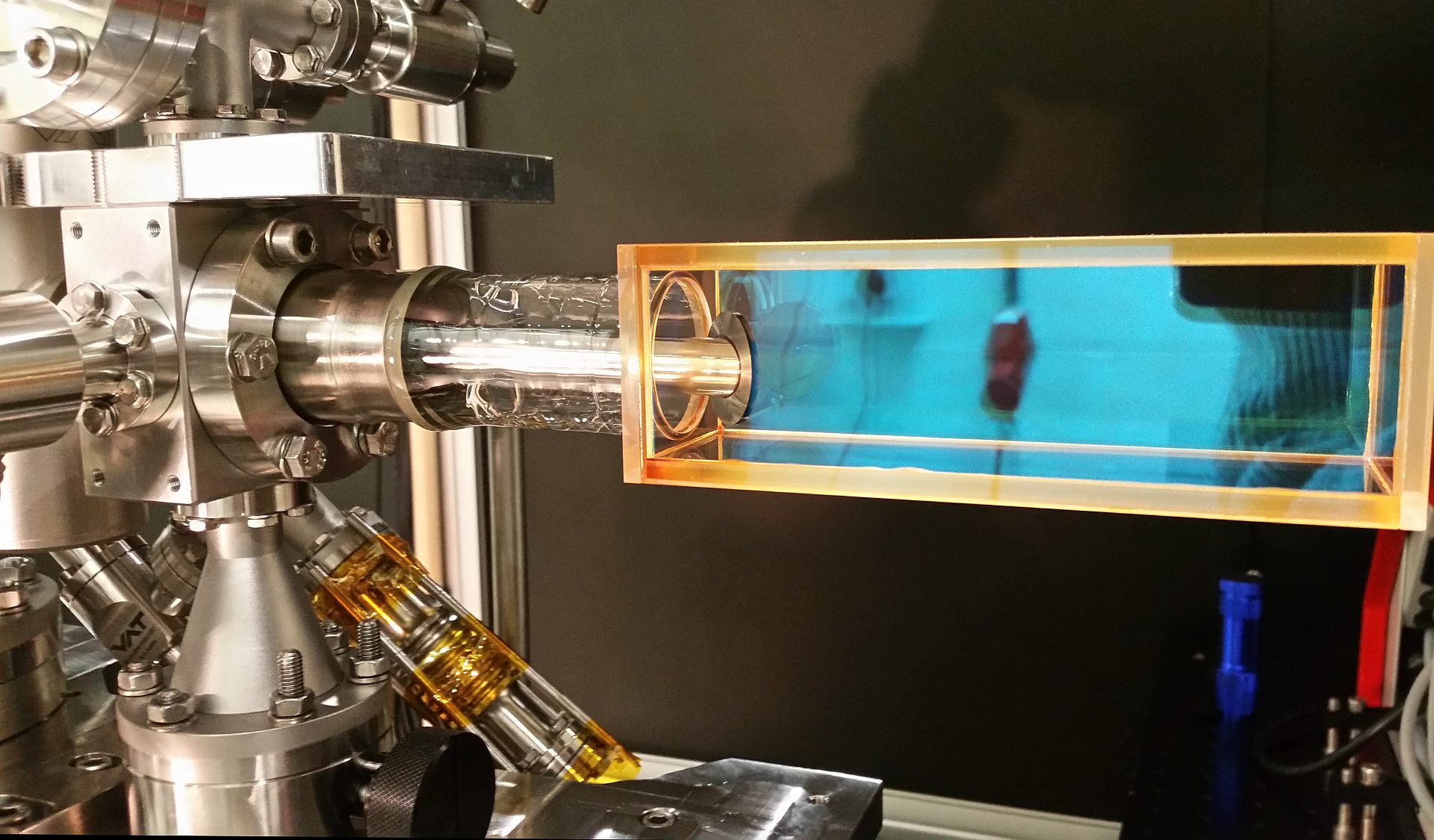 Glass cell with vacuum
Glass cell with vacuum
Experimental setup
The setup is designed to cool a gas of cesium atoms from room temperature to quantum degeneracy. We use a combination of laser cooling techniques, such as 2D and 3D magneto-optical traps (MOTs), degenerate Raman-sideband-cooling, and large dipole traps with laser beam powers up to 200W. The final cooling step is based on evaporative cooling in a crossed-beam dipole trap. We reach Bose-Einstein-condensates (BECs) of 300,000 atoms in 12s.
Vacuum apparatus
We tried to keep the vacuum apparatus as simple as possible. There are two glass cells, one with a moderate pressure of 10-8 mbar for the 2D MOT and one with 10-11 mbar for the 3D MOT and the main experiments. All pumps, gauges, vales, and ampules with cesium, are in the middle. The atoms diffuse from the cesium ampule into the glass cess of the 2D MOT. They are cooled with laser beams along two directions, and finally pushed with another laser beam into the main glass cell.

Vaccuum system with two glass cells
Bose-Einstein condensate
The final cooling step is based on evaporative cooling in a crossed-beam dipole trap. Once a critical temperature Tc is reached, the gas shows a phase transition towards a Bose-Einstein-condensates. We create BECs of 300,000 atoms in a total duration of 12s.
The figure below shows absorption images of the momentum profile of a gas of atoms. Left, top to bottoms: The profile changes as the gas is cooled below the critical temperature. Below Tc, a BEC forms and the gas is localized in momentum space. Right: Horizontally integrated density profiles in momentum space. Again, you momentum profiles narrows below the critical temperature.
